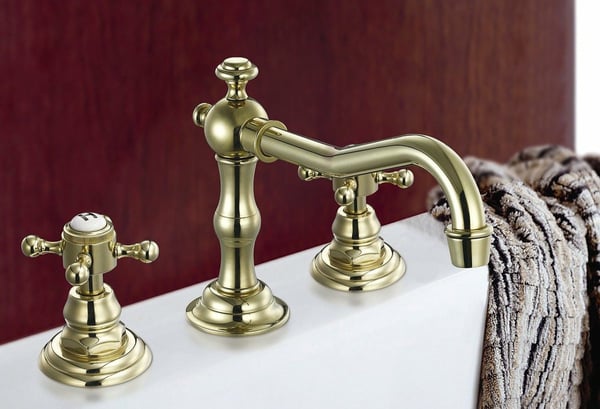Often, when people think of construction, they think of the building process. But there’s also design elements in construction, especially with new builds and renovations. It’s not just about the structure, but how the home will look. In another article, we discussed some structural materials to keep on hand in case of a delay, supply issue or damages. Here, we will offer tips on what design elements to keep in stock for your projects.
Before determining which of these materials to keep on hand, consider the floor plans and designs that you offer. Are you a production builder, semi-custom or custom builder? A custom builder may not keep a lot of interior materials on hand because the customer will choose what they want in their home. Semi-custom and production builders have the opportunity to stock up on items more commonly chosen based on the designs they offer. Items can be ordered in bulk to cut down on costs, and having them on hand saves time.
Knobs and Locks
Builders often know how many cabinets they’ll be installing and how many doors will be placed inside a home. Deadbolts and exterior door knobs won’t change often, so it’s a good idea to keep a number of those on hand. Interior door handles and cabinet knobs come in a variety of styles and finishes, but you may only offer a few of them. Keep extras of those on-hand to show customers what their options are (even custom builders can do this to help spark ideas), but also have backups in case of damage, delays or any other issue preventing you from getting what you need. Likely, you’ll want to keep enough on hand for a whole project, just in case.
Flooring
Whether you’re using carpet, hardwoods, tile, linoleum or vinyl, you should have floor samples on hand to show the customer. Carpet is likely only going to be ordered on an as-needed basis as the rolls are cumbersome and take up a lot of space. Similar considerations are taken with linoleum and vinyl, unless you’re using the stick-on squares. Tile and hardwood flooring typically comes in boxes, though, and will be easier to have at your disposal. At a minimum you should have samples to show your customers, but it may prove beneficial to keep a small stock of the items that are more popular among your customer base in the event of a delay or damaged product.
Sinks, Faucets, and Countertops
Every home has a handful of these. While the sinks themselves may not be kept on-hand, faucets are a good idea to have. Both are relatively inexpensive and not huge, capable of sitting on a shelf in a warehouse until needed. Always have samples of countertops as well, whether you’re using granite, marble, Formica, fiberglass, ceramic or something else, the customer may want to see and feel the product themselves.
Appliances
This may not apply to custom builders in particular, but generally production and semi-custom builders will have a set of appliances they use for when a customer chooses an upgrade. Some customers will furnish their own appliances, but having a few stoves, ranges and refrigerators on hand can be helpful.
Paint & Drywall
This may seem like something every builder should know, but paint and drywall should always be kept on hand. Every single build uses both, every single build will be given a neutral color of paint unless the customer requests and purchases something else. Be sure to note how quickly you go through these to determine how much you should keep on hand. You don’t want paint going bad just sitting in your warehouse, but you also don’t want to run out either.
These are just a few of the design elements you might want to keep on hand for your projects. If you’re a big production builder with a giant warehouse, you may keep additional items like crown molding and chair rails, stairway banisters and cabinets themselves. But for the most part, the items listed here should be sufficient to fall back on should there be a delay in an order or damage done to a product. As always, store these items in a moisture-controlled environment to reduce the chances of mold growth.

Recent Posts
- Spec Construction Loans: A Spec Line of Credit Is Worth the Paperwork
- Spec Homes and Pre-Sale Homes: The Relative Benefits for a Spec Builder
- How a Lender Sees Spec Construction Success: Insights for the Investor Builder
- How Is a Spec House Different From Other Kinds of House Construction?
- How a Private Lender Compares to a Bank Lender for a Spec House Construction Loan
